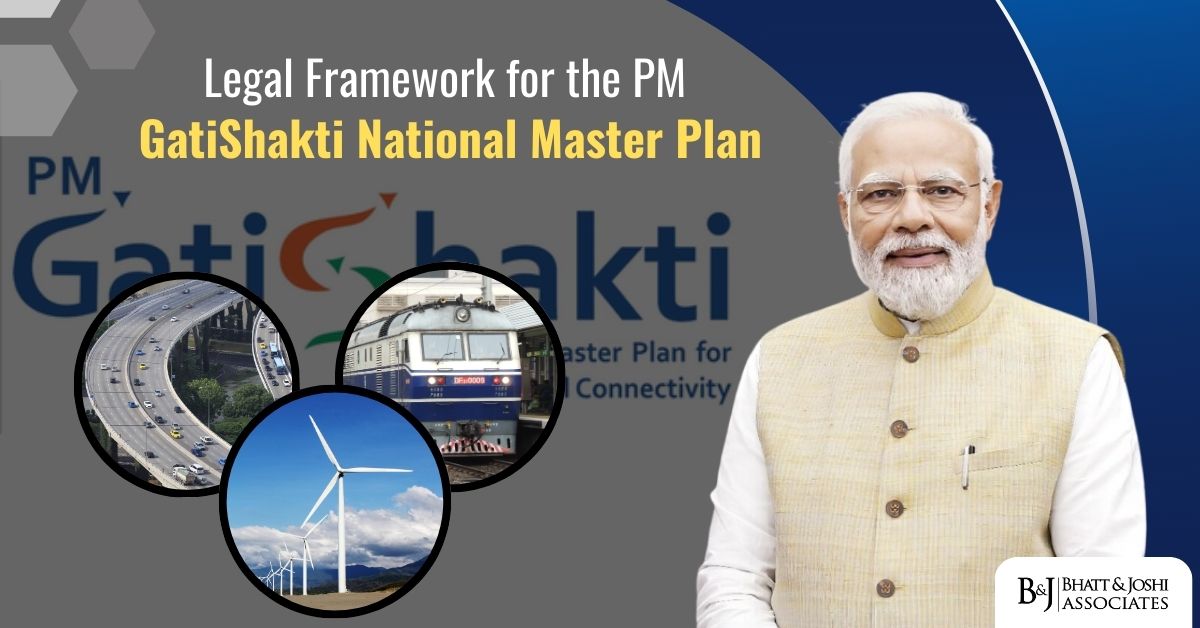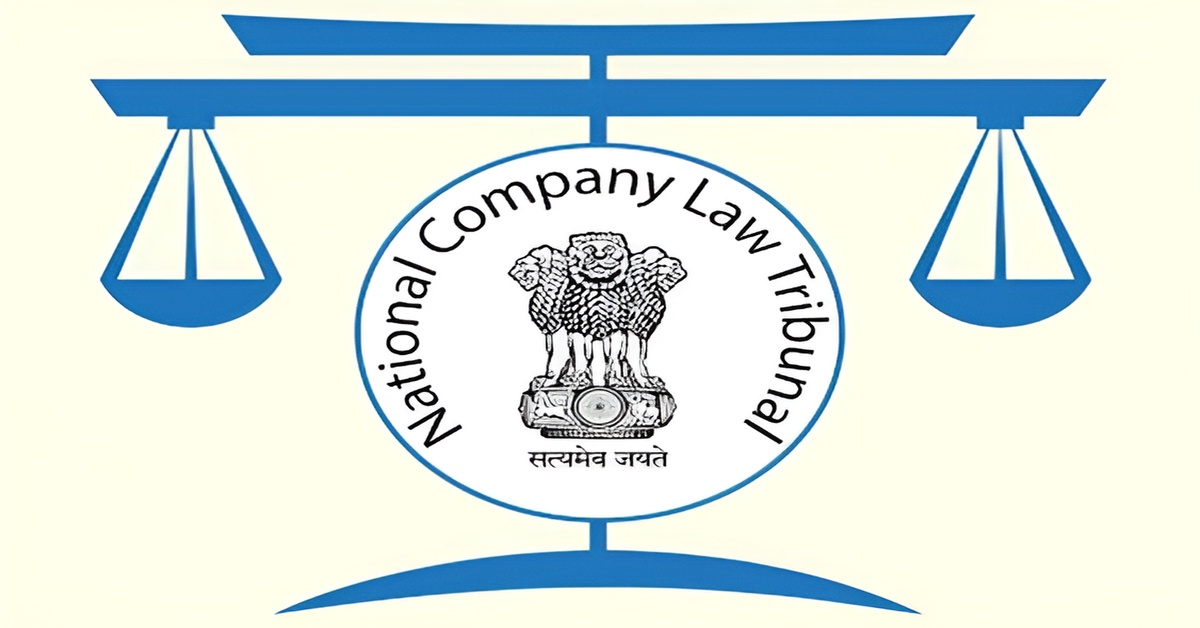Introduction
The PM GatiShakti National Master Plan is a remarkable project expected to unify and consolidate all the infrastructure development in the country. It was launched in October 2021 to facilitate economic growth for India by modernizing the infrastructure system in the country by reducing costs, improving efficiencies, and connecting a variety of sectors. The plan of course is very ambitious in terms of modernizing infrastructure, but one must look into the legal structures, policies, and judicial processes that go hand in hand towards achieving this goal. This article examines the legal and regulatory structures limiting the PM Gati Shakti initiative and locates its supporting laws, rules, and judicial decisions within the overarching goals of the initiative.
Overview of PM GatiShakti National Master Plan
PM GatiShakti aims to provide a single platform for 16 central government ministries and departments for integrated multi-modal infrastructure planning at a level never attempted before. It aims at addressing the problem of infrastructure deficit, poor inter-agency collaboration, and slow pace of project implementation. The use of Geographic Information System (GIS) technology is emphasized to enhance information sharing and analytical capabilities to improve synchronized multi-sectoral project planning and execution. It also attempts to integrate diverse aspects of infrastructure development by encouraging participation from non-traditional stakeholders such as state governments, the private sector, and local governmental bodies.
As much as the PM GatiShakti initiative is policy-centric, its implementation is dependent on the use of some existing and the introduction of new legal instruments, regulatory structures, and administrative changes. This master plan, as is evident, has a strong dependency on the legal and institutional framework within which it needs to function.
Legal Aspects of GatiShakti National Master Plan
GatiShakti Constitutional Features
The development of infrastructure in India is a subject that has several facets governed by the Constitution. The Indian Constitution, under its Seventh Schedule, distributes subjects into Union and State Lists. While the Union List includes infrastructure sectors such as railways, highways, ports, and airways, land acquisition along with urban planning fall within the Concurrent or State Lists. This distribution brings to the forefront the need for cooperative federalism in the implementation of the PM Gati Shakti plan. The centre and state must work in cooperation in order to deal with the jurisdictional complexities of such a large initiative.
The Constitution’s Articles 246 and 256 give the authority to the central government to formulate policies and ensure that the state governments comply with them. Article 257 also states that the executive power of the states shall be exercised in such a way that does not obstruct or prejudice the exercise of the executive power of the Union. Also, the Doctrine of Pith and Substance is often invoked to resolve disputes from concurrent jurisdiction boundaries with the guarantees that primary legislation on matters of infrastructure must be followed by the central government.
Infra Structure Specific Legislation
Several legislations that are specific to certain sectors are in place for the infrastructure sectors that are captured under the PM GatiShakti umbrella. These laws provide the requisite legal framework for the implementation of major projects that often require collision course changes to incorporate multi-modal systems and speed up implementation.
The National Highways Act of 1956 stands out as an important piece of legislation as it provides rules about the construction, repair, and administration of national highways. The terms of the Act allow the central government to designate any presented highway as a national highway, take control of required land, and ensure proper execution of highway works within a reasonable time. This also follows the inclusion of the Indian Railways Act, 1989, which along with the construction and operation of railways also enabled the incorporation of multi-model logistics under GatiShakti, so railways serve as an integral part of the strategy as they are the primary mode of freight transport and connectivity.
Under PM GatiShakti, port connectivity objectives are met through the Major Port Authorities Act of 2021, which provides more operational flexibility with funding for the authorities while also giving them streamlined processes to make decisions, which are essential from a business point of view. These are complemented by the Airports Authority of India Act, 1994, which allows them to plan and manage airports and airspace, which is also in line with the scope of improving the air transport infrastructure within the project. This integration’s energy needs are served through the Electricity Act, of 2003, which controls the generation, transmission and distribution of electricity for the integrated infrastructure projects within the plan.
PM GatiShakti’s Land Acquisition Policies PM GatiShakti’s infrastructure endeavours cover almost every aspect of land acquisition, which is crucial in development. The acquisition of land for public purposes is governed by The Right to Fair Compensation and Transparency in Land Acquisition, Rehabilitation, and Resettlement Act of 2013 (LARR Act) which guarantees fair compensation and rehabilitation as well. The overriding aim of the Act is to achieve development while upholding social justice, which can only be achieved through proactive governance because social development is generally slow, making it necessary for reforms to keep up with the pace of new developments. The LARR Act process is premised on transparency as well as stakeholder consultation before the implementation of any project to ensure that the level of disruption and violation of rights is minimal to the concerned citizens.
Regulatory Mechanisms of GatiShakti National Master Plan
Unified Logistics Interface Platform (ULIP)
The integrated PM GatiShakti program is supplemented by a Unified Logistics Interface Platform (ULIP)which seeks to consolidate various logistics data accessible by different ministries. ULIP is implemented in the jurisdiction of the Ministry of Commerce and Industry and is also governed by the Information Technology Act of 2000 in terms of data protection, utilization, and sharing. Platforms created for stakeholders enhance cooperation by offering immediate assistance, thereby increasing operational efficiency within logistical systems.
Public-Private Partnership (PPP) Framework
Private sector participation in PM GatiShakti projects can be drawn in by the legal framework for PPPs. Policies such as MPG Guidelines in the Ministry of Finance and sector-specific PPP policies enable financing, risk sharing and management of projects. Some judicial arms have contributed towards gaps in PPP contracts like in Reliance Energy Ltd. v. Maharashtra State Road Development Corporation (2007) where interventions did ensure equity in PPP agreements. It is these frameworks that help in financing limitations and harnessing private skills in the development of infrastructure.
Judicial Pronouncements and Case Laws
Land Acquisition Disputes
The judicial construction of the LARR Act has affected the infrastructure projects greatly. The Supreme Court Indore Development Authority v Manoharlal (2020) case was instrumental as it dealt with land acquisition proceedings and their lapsing, thus helping to meet the timelines of projects under PM GatiShakti. The court also noted how unfortunate and prolonged delays in dispute resolution should not impede projects that are of national significance.
Environmental Compliances
The Supreme Court, in its decision of Alembic Pharmaceuticals Ltd. v. Rohit Prajapati (2020), further articulated that development activities must be balanced with environmental concerns by enhancing compliance efforts with the environmental laws during the project’s implementation phase. The case highlighted the sustainable development doctrine and criticized granting infrastructure project clearances by requiring that the Canadian government exercise more caution.
Disputes Under Contract Law
There are disagreements between parties to an infrastructure contract regarding the performance of contractual duties. The judgement in Mahaluxmi Infra Projects Ltd. v. State of Uttar Pradesh (2022) focused on fairness and openness in government contracts and has taken steps towards clarifying the bounds of enforceability of the aforementionedd contracts for bigger projects. The courts have been very proactiveinf ensuring that public works are done responsibly and equitablyforo all the concerned parties to the projects.
Obstacles and the Path to Resolution
Collaboration of Stakeholders
The participation of the central and state governments, independent agencies, and the private sector means that there are many parties which makes coordination difficult. The issues are best solved through stronger cooperative federalism and the development of effective institutional arrangements. The creation of units for the control of the project and inter-ministerial coordination committees will be helpful in project implementation.
Legal And Policy Reforms
Progressive legal reforms and policies will be required to address PM Gati Shakti’s issues. To facilitate project implementation, the processes of land acquisition, granting environmental clearances, and conflict resolution need to be streamlined. Reforms should concentrate on abolishing unnecessary bureaucratic processes, improving e-governance, and executing infrastructure projects on schedule.
Judicial Interventions
Judicial functions can be proactively exercised to aid PM Gati Shakti’s objectives through conflict resolution, public interest litigation, and sustainable development policy. The judicial system needs to continue performing its social responsibility of conflict resolution equitably.
As a visionary initiative, the PM GatiShakti National Master Plan aims to transform the infrastructure of India as a whole. Their implementation relies heavily on a specific legal structure, strong regulatory frameworks, and good governance. While the existing laws are favourable and provide the bedrock for the transformational plan, the solution to challenges through legal and policy changes will be fundamental. The integration of the legislative, executive, and judiciary, together with active stakeholder participation, will ensure that the GatiShakti becomes a milestone in achieving sustainable and inclusive development in India. With strong legal backing and continued efforts directed towards its success, it is possible to make India a global leader in infrastructure development which will eventually lead to economic growth and enhance the living standards of its citizens.
Conclusion
The PM GatiShakti National Master Plan is a transformative initiative with the potential to revolutionize India’s infrastructure landscape. Its success depends on a robust legal framework, strong regulatory mechanisms, and efficient governance. While existing laws provide a solid foundation, continuous legal and policy improvements will be necessary to overcome challenges.
The integration of legislative, executive, and judicial efforts, along with active stakeholder participation, will ensure that PM GatiShakti achieves its goal of sustainable and inclusive infrastructure development. With strong legal backing and proactive governance, India can emerge as a global leader in infrastructure, fostering economic growth and improving citizens’ living standards.














